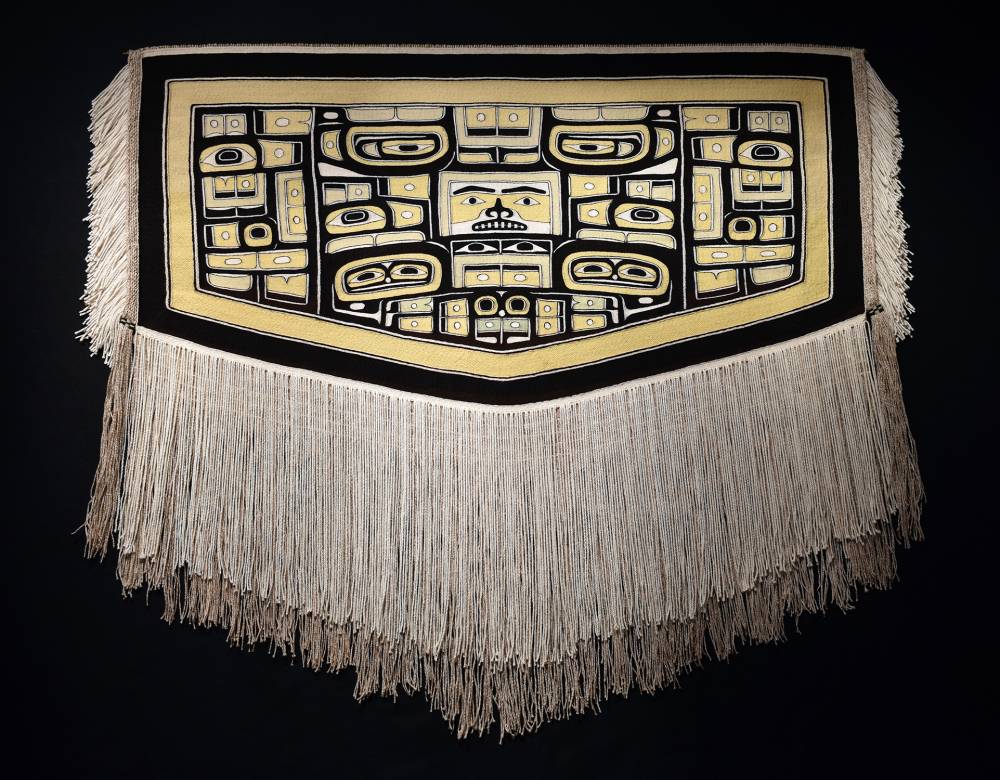
A full-sized Chilkat robe by Ketchikan master weaver Dorica Jackson will be joining the Ketchikan Museums collection.
In a Morning Edition interview with KRBD, Jackson explains that the Chilkat weaving style is used to make highly prized ceremonial dancing regalia. But more than four decades ago, it was a style that was dying out.
“I guess by 1970, there were only a couple of people left who really knew how to do the weaving,” she said. “And I became familiar with this when I was at University of Washington taking classes from Bill Holm, and was already into textiles and weaving and decided, I always say, with all the arrogance of a 22-year-old that I was going to learn it.”
And learn it she did. She used books and papers, and examined pieces of historic robes to teach herself the technique.
Her first commission was a trade with her future husband, Nathan Jackson. She made him some Chilkat leggings in exchange some of his artwork. She said she never got all the art, but it worked out anyway.
Dorica Jackson said she wove a full robe in the mid-70s at the National Park Service’s Sitka Historical National Monument. She later made an apron, and then a second a robe for Nathan Jackson.
“And then I got a commission in 2000 to do the one that I just finished last September,” she said, laughing. “That took 16 years because I didn’t really work on it full time, and then I ended up with a full-time job so then I really didn’t work on it.”
She eventually was able to get back to the robe, and completed it in the fall of 2018. But the person who originally commissioned the robe wasn’t able to complete the purchase. That made the piece available for the city-owned Ketchikan Museums Department.
Marni Rickelmann is the department’s senior curator of programs.
“We received a grant from the – it was an art acquisition grant through Museums Alaska with funding from the Rasmuson Foundation,” she said. “That added to museum funds and allowed us to purchase it.”
The grant was for $35,000. The museum used $15,000 from its budgeted acquisition funds for the balance of the robe’s cost.
The robe will be housed at the Totem Heritage Center next to City Park. It will be displayed in a way that shows both sides, which Jackson said will allow people to see all the secrets.
She described the technique, which starts with a freestanding loom.
“It’s a free-hanging warp — mountain goat wool, traditionally, and cedar bark, spun together,” she said. “Everybody uses merino (wool) now, but if you can get goat wool with long enough fibers, it’s really nice to work with. Then it’s a twining technique. Two-strand and three-strand braiding and twining.”
For this robe, Jackson said she used traditional Native dyes made with moss, hemlock bark and oxidized copper.
Jackson is a teacher, too, and has taught others the Chilkat weaving technique through the Totem Heritage Center’s Native Arts Studies program.
KRBD’s Maria Dudzak contributed to this report.





